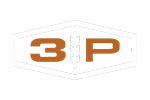
Design - Sporting Clays Course & Five-Stand
Interpretive Design
“Good design is a renaissance attitude that combines technology, cognitive science, human need, and beauty to produce something that the world didn’t know it was missing.” – Paola Antonelli
Introduction
A clay target range offers a diverse range of hands-on activities that are recreational, educational, and culturally enriching, catering to participants of all ages and skill levels. The design of the proposed range should be meticulously crafted to establish areas, amenities, and initiatives that promise exceptional experiences for a diverse clientele. A robust business model is essential to ensure the project's long-term success, as it often takes several years for a new venture to become established.
The variety and size of ranges differ significantly based on available land, intended results, usage type, and the requirements of public or private business models. For instance, shooting ranges typically fit into categories such as individual or family use, youth camps, private corporate facilities, hunt clubs with additional amenities, government-operated ranges, open public shooting ranges, and resort offerings.
Nowadays, a variety of disciplines are available, with many facilities offering sporting clays, trap, skeet, rifle and pistol shooting, helices, FITASC sporting, and archery. Additionally, if there's a pond or river nearby, fishing might also be an option. Accommodating everything within the designated land tract often poses a challenge, thus enlisting the aid of skilled designers and planners can be crucial.
For range developers, the first step is typically to connect with the local planning and zoning authority. It's a good idea to introduce yourself to the local planning officer before commencing any work. This initial outreach can help confirm any relevant local noise ordinances or county-specific restrictions and helps build important relationships, laying a positive foundation for your project.
Universal Design Concept
The concept of universal design originated in the 1970s within the realm of architecture and has since expanded far beyond mere design. It now includes planning, design, and programming aimed at ensuring accessibility, usability, and engagement for a broad, diverse, and intergenerational audience.
The development of a shooting range facility should incorporate the seven main principles of universal design.
1. Equitable Use: Marketable to people with diverse abilities.
2. Flexibility in Use: Accommodates a wide range of individual preferences and abilities.
Here are some design projects undertaken by John Higgins:
